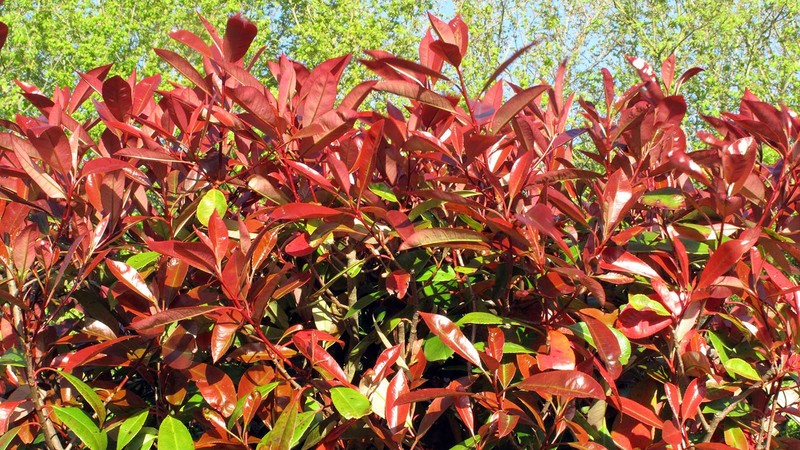Elaeagnus or commonly called as silverberry or oleaster is a multipurpose plant perfect for planting hedge with a good physical appearance. Particularly, this article discusses the advantages of placing the Elaeagnus hedging plants, the main features of them, the way to plant and for how it is better to take care of them.
Benefits of Elaeagnus Hedging Plants
Year-Round Interest:
The Elaeagnus hedges are always green offering year-round interest even in the cold season as their color does not change. The leaf color ranges from shimmering silver to a dull grayish green, which stands out from the other foliage plants.
Rapid Growth:
Elaeagnus plants are fast growers and ideal for growing a dense hedge that will give you a full hedge in its first year. Depending on the variety and the conditions under which they are grown, they can grow to be between 4 to 15 feet tall.
Low Maintenance:
Once a plant has become established, these plants should not be very demanding to maintain. These are also adapted to dry conditions and have different abilities to bear the soil, which makes the suitable for the different lands.
Wildlife Friendly:
Elaeagnus hedges bring in wildlife such as birds and insects, as well as, beneficial pollinators. They bloom small, sweet smelling flowers in the end of summer or the beginning of the fall and bees and butterflies love plants.
Privacy and Screening:
Elaeagnus plants have dense foilage leaves and grow quickly and is used in forming barriers or hedges for wind protection. They are perfect as the noise and wind barrier which is equally perfect for use in the congested urban places and even in the rural places.
Characteristics of Elaeagnus Plants
Foliage:
Elaeagnus plants develop simple leaves which are elliptical, thick and leathery having a glossy silver or gray color at the underside. The upper face is usually darker green to create aesthetics and beauty of the hedge to the surprise of the viewers.
Flowers and Fruit:
About the flowering, Elaeagnus plants bear small, fragrant creamy white flowers. After the blooming time they produce small, orange to red berries which contribute to the seasonal ornamental values and hence wildlife interest.
Growth Habit:
The growth habit of Elaeagnus differs with the species and the variety in question. This is the case with some of the arrangements that are more ‘erect’, as opposed to spreading or arched. This variability enables the setting of the hedge’s form as well as the size mainly in conformity to the elasticity in its variety.
Planting Guidelines for Elaeagnus Hedges
Site Selection:
It prefers a position that has full sun to part shade during the hotter months of the year. Propagation of Elaeagnus plants is easy they prefer a slightly alkaline to neutral well-drained soil. Do not place your plant where it frequently gets waterlogged as this can cause root rot.
Soil Preparation:
Before planting, plow the soil to ensure that it has a better fertility and drainage status by adding organic materials. They can grow well in different soils, sandy and clay ones, but they feel better at slightly acidic to neutral pH.
Spacing:
Space the plants 3-5 feet apart should they be expected to grow or spread as only large plants can comfortably be planted closer to each other. Density may have to be higher for a more formal hedge. This will define the density and the manner the hedge would be planted, generally applicable in most hedge situations.
Planting:
To transplant, dig a hole that is wide and twice the diameter of the root ball, and has the same depth. The next step is placing the plants into the holes created and the soil used for backfilling; this process is followed by watering the plants. They should surround the base with mulch to help conserve moisture and prevent the growth of a weed.
Maintenance Tips for Elaeagnus Hedges
Watering:
From the practice, water the plants often, but more so often during the dry seasons so that the roots can be well developed. After becoming fully grown they are fairly low-maintenance, needing little water once the hedge is fully grown.
Pruning:
Elaeagnus hedges need regular trimming to keep their shape and density and that should be done yearly. To prune effectively, the work should be carried out in late winter or early spring before there is renewal growth. Start by pruning the tree to get rid of the dead and damaged branches as well as thinning up the interior to allow air flow.
Fertilizing:
Fertilize the plant at the beginning of the early spring with a balanced fertilizer for proper growth. Ensure that you use the right amount of the pesticide as instructed by the manufacturer and also the correct frequency it should be used.
Pest and Disease Control:
Elaeagnus plants are relatively immune to pest-Board of Studies and to diseases. However, always check for general pests like aphids or scale insects that usually attack the plants. Control any infestations with correct techniques, like utilizing the insecticidal soap or neem oil.
Elaeagnus hedging plants have many features that make them truly valuable, such as interest in the yard throughout the year, fast growth, and unpretentiousness. They can easily be grown in different soils and climate and for this reason are among the best plants for growing specially designed hedges. By this information you can have the desire pride and screen, wildlife cover supply and fixation through following planting and caring instructions given in this article.

